SKETCH OF SCENOGRAPHY FOR THE COMEDY DON QUIXOTE
FRENCH SCHOOL ABOUT 1730
Gouache on paper, original XVIII rococo frame with old glass.
22.5 x 40.5 cm / 8.9 x 16 inches, with frame 31 x 49 cm / 12.2 x 19.3 inches
PROVENANCE
France, private collection
DON QUIXOTE ON THE FRENCH STAGE: THEATER, BALLET, AND SCENOGRAPHY
Don Quixote is a character who has captivated the hearts of theater artists and audiences worldwide. France, a trendsetter not only in fashion but also in the arts, offered a unique interpretation of this figure in the 18th century, enchanting the public with subtle burlesque, fine satire, and the grace of ballet.
The period from 1715 to 1730 can be described as a renaissance of interest in Don Quixote on the French stage. However, Cervantes' novel itself took a back seat in these productions: playwrights drew inspiration from specific episodes, sometimes reinterpreting them beyond recognition. Jean Galbert de Campistron presented Le Jaloux désabusé in 1709, Philippe Néricault Destouches created Le Curieux impertinent in 1711, and Louis Fuzelier added a comic touch to the figure of Sancho Panza in his plays Arlequin et Scaramouche vendangeurs (1710) and Arlequin défenseur d’Homère (1715).
The year 1720 is particularly noteworthy, when Charles-Antoine Coypel presented Les Folies de Cardénio, a heroic-comic ballet. This was followed by Les Noces de Gamache (1722), Marivaux's Le Prince travesti (1724), and the ballet Don Quichotte chez la Duchesse (1734). These performances emphasized not the philosophical depth of the novel but its comic and spectacular potential.
THE ARRIVAL OF DON QUIXOTE AT CAMACHO'S WEDDING: THEATRICALITY AND GRANDEUR
One of the most striking episodes in the book—the wedding of the wealthy Camacho—became particularly popular in theatrical adaptations. This sumptuous feast is described by Cervantes with pictorial precision:
"The first thing Sancho saw was a whole ox spitted on a whole elm, and, in the fire where it was to be roasted, there was burning a pretty mountain of wood; and six earthen pots, each one containing a whole shamble of meat, and all that they held were not to be missed, as they were now taking out whole sheep and putting in whole hogsheads. The savory smell of the meat, and the seasoning of the pots, did somewhat revive and cheer up Sancho's spirits, and no less did the sight of the goodly company that were about him."
— Don Quixote, Part II, Chapter XX
This episode is reflected in the theatrical scenography of the 18th century. The sketches of the productions convey the spirit of the grand feast: in the center, elegant ladies carrying dishes, recreating the atmosphere of a court ballet. In the foreground appear Don Quixote and Sancho, while the background, with a city rising in the distance, gives the scene depth and perspective.
The complex multi-plan composition, theatrical draperies, and emphasized expression of poses testify to the influence of French baroque scenography. This is not just painting—it's a frozen spectacle, reflecting the aesthetics of the theater of the Louis XV era, where each element underscores elegance and spectacle.




















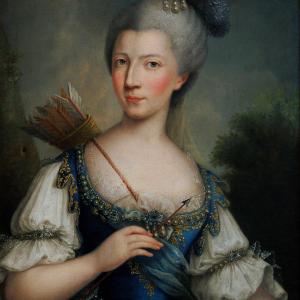
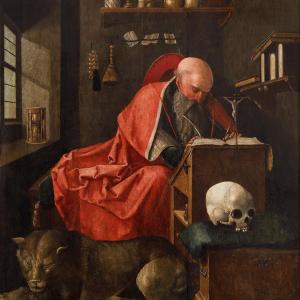
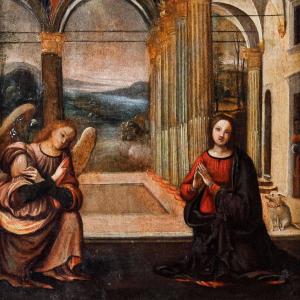








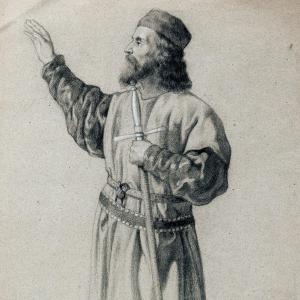



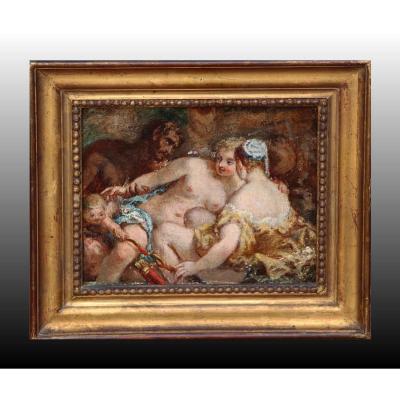
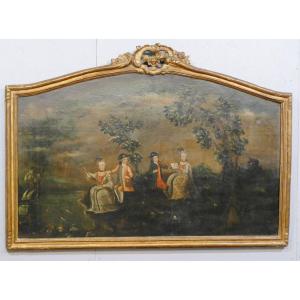



 Le Magazine de PROANTIC
Le Magazine de PROANTIC TRÉSORS Magazine
TRÉSORS Magazine Rivista Artiquariato
Rivista Artiquariato